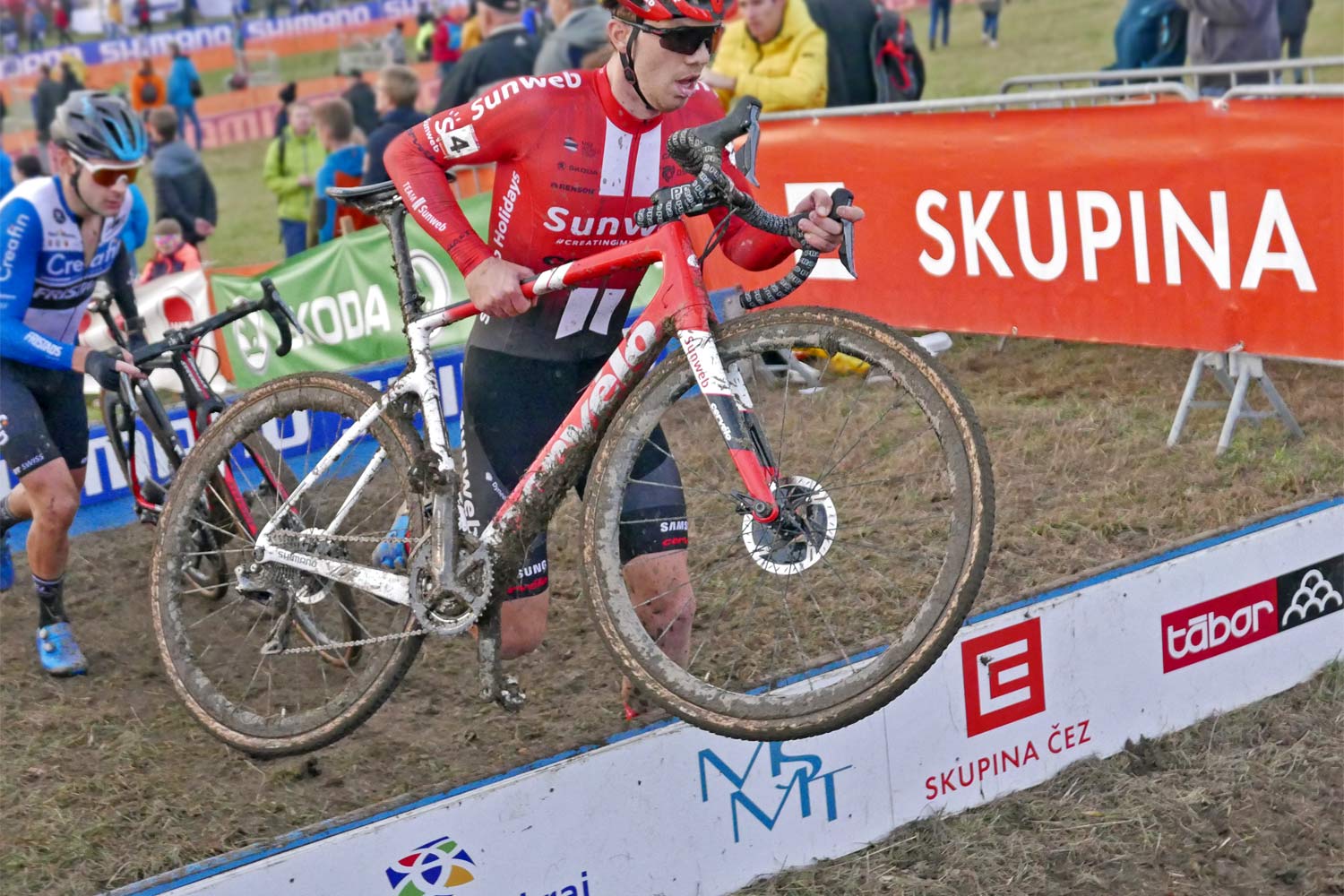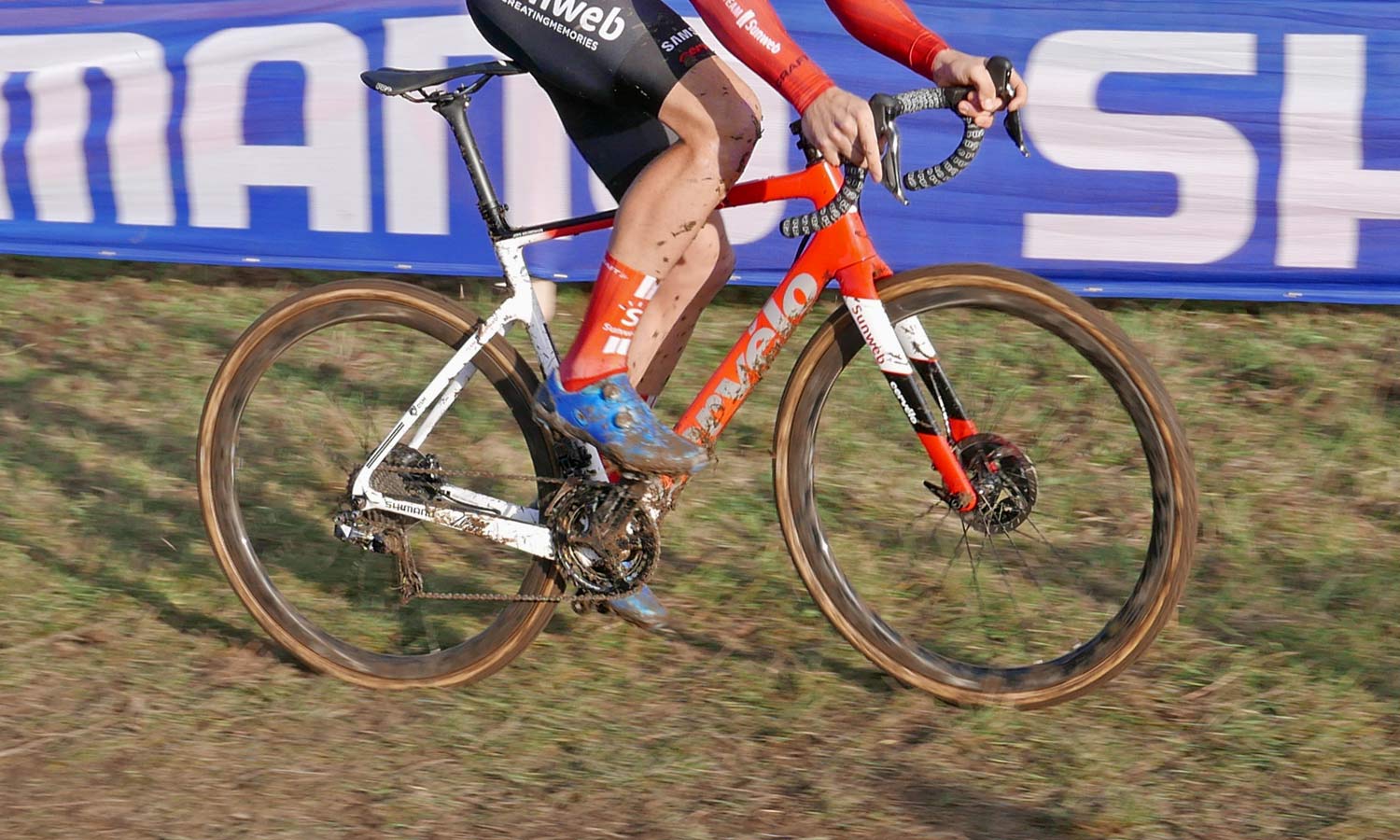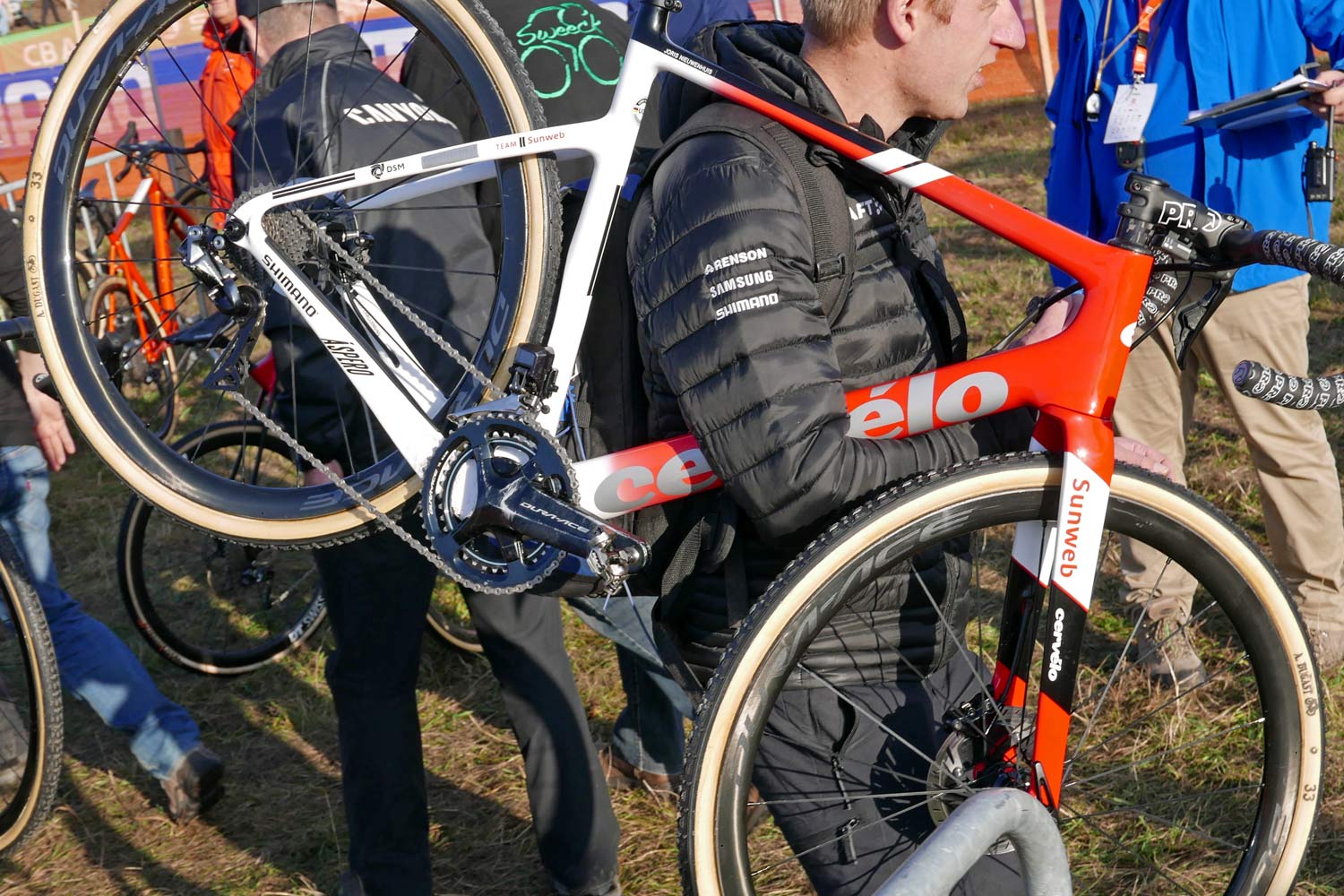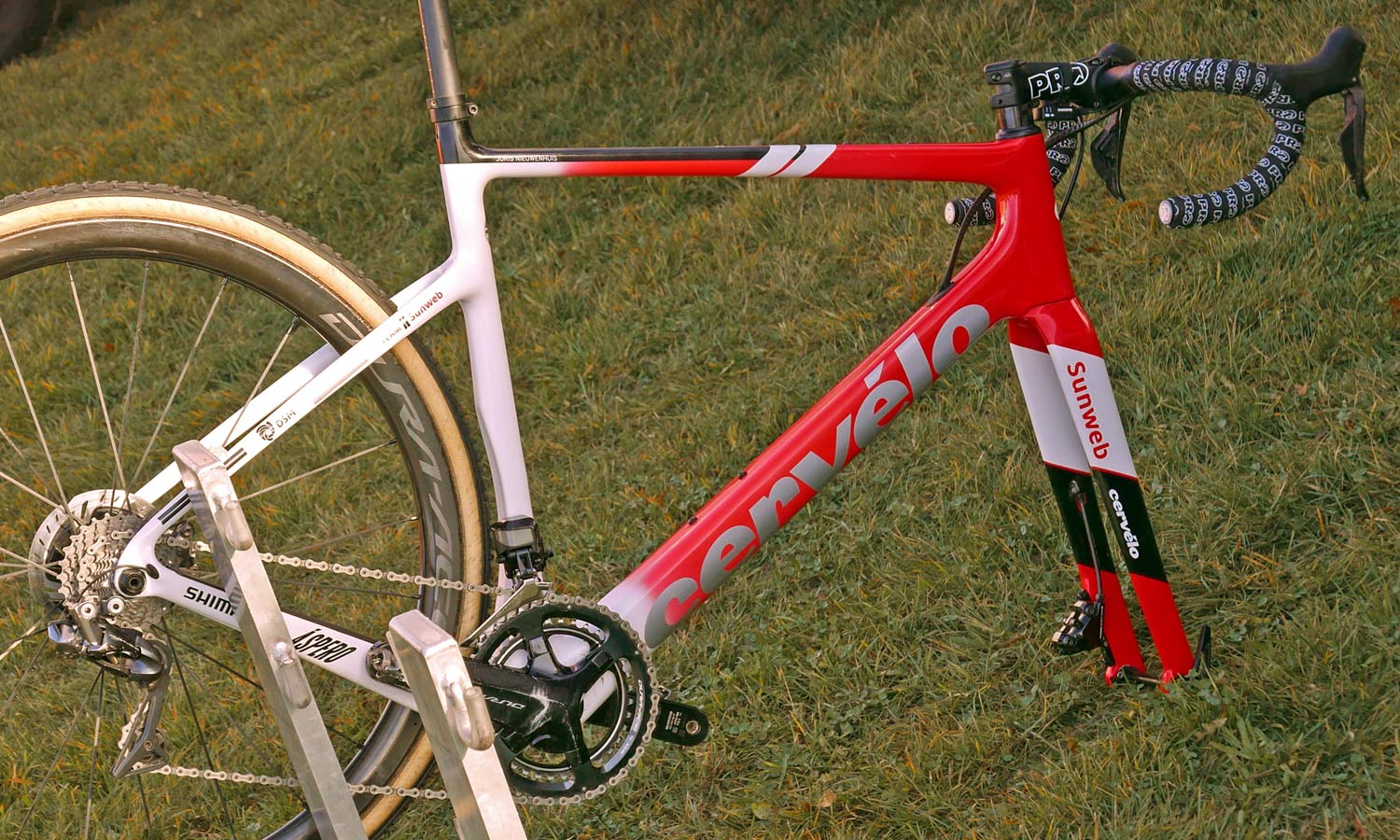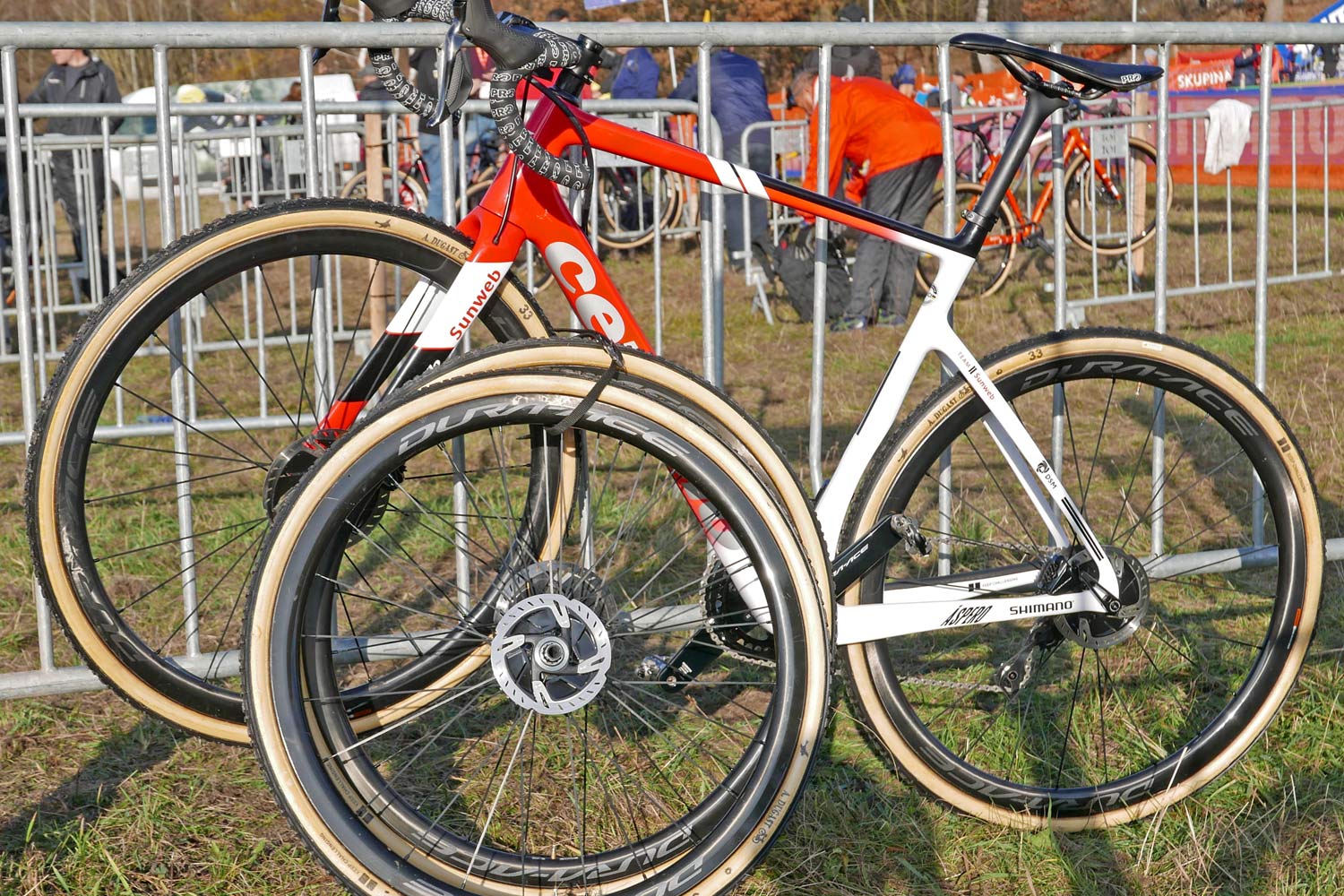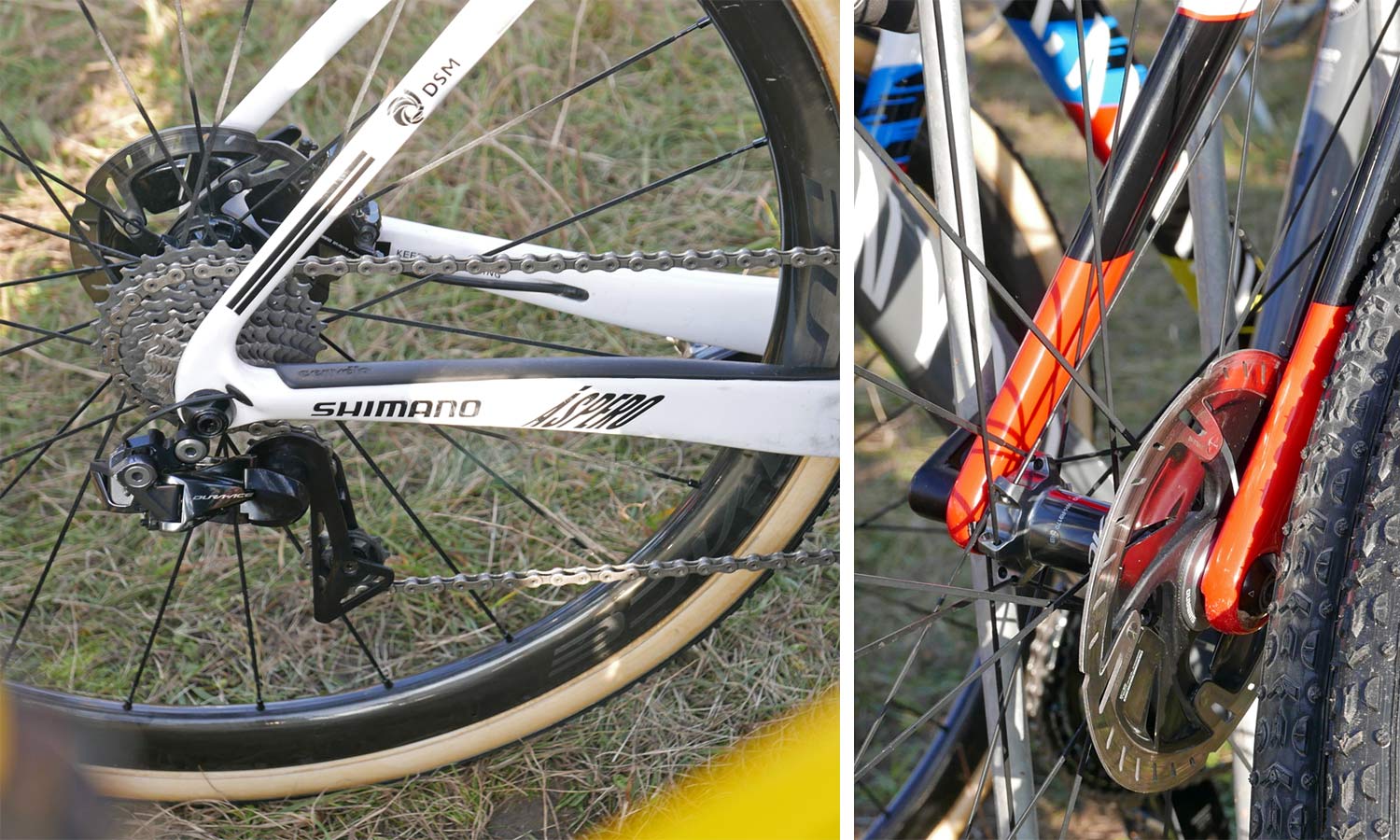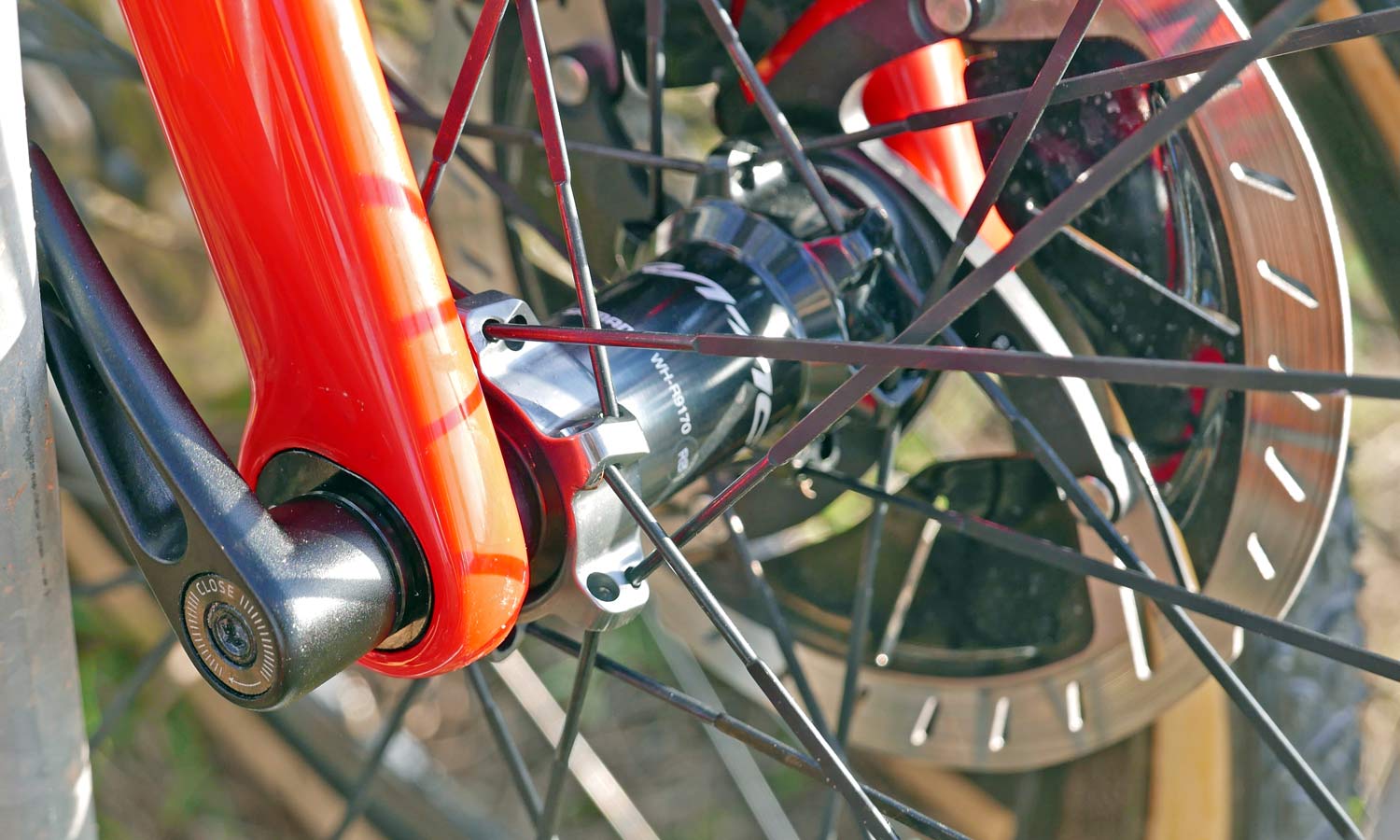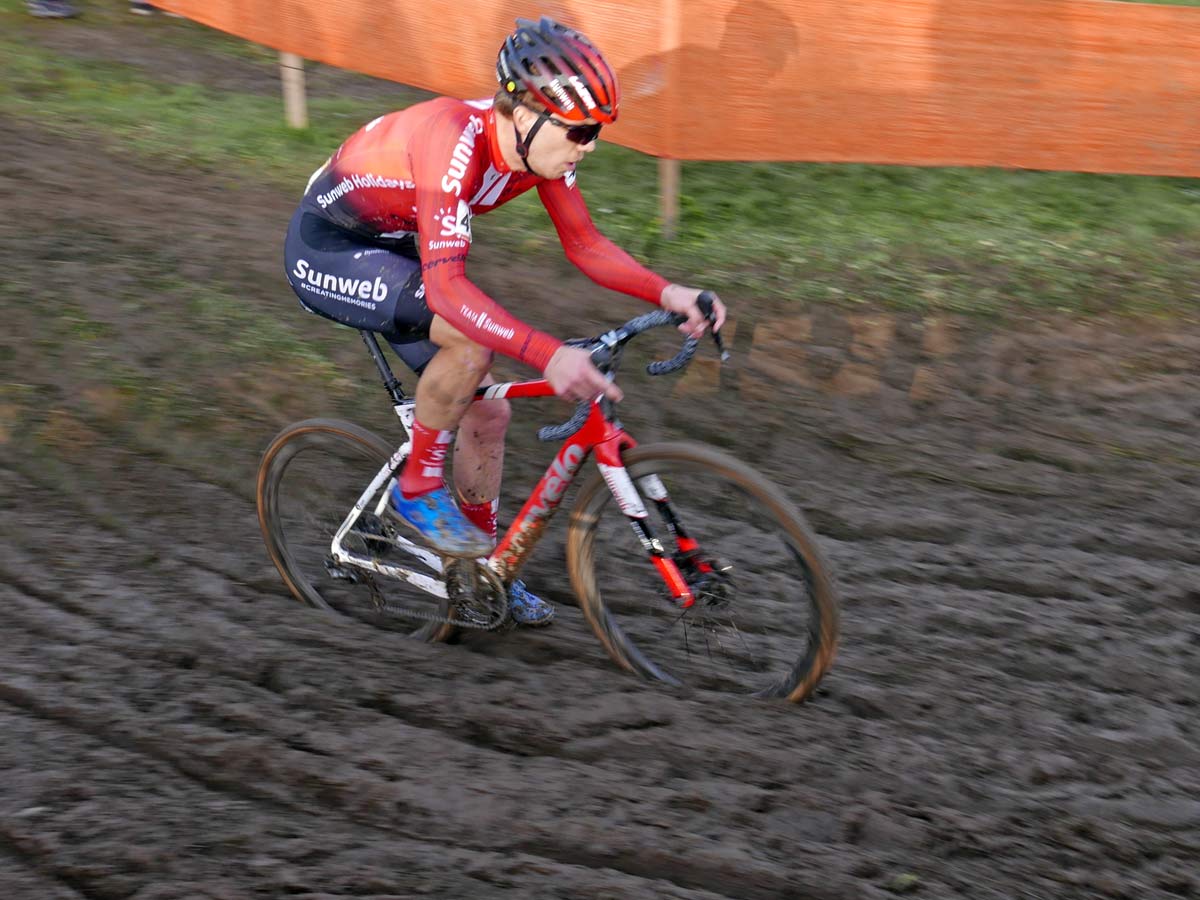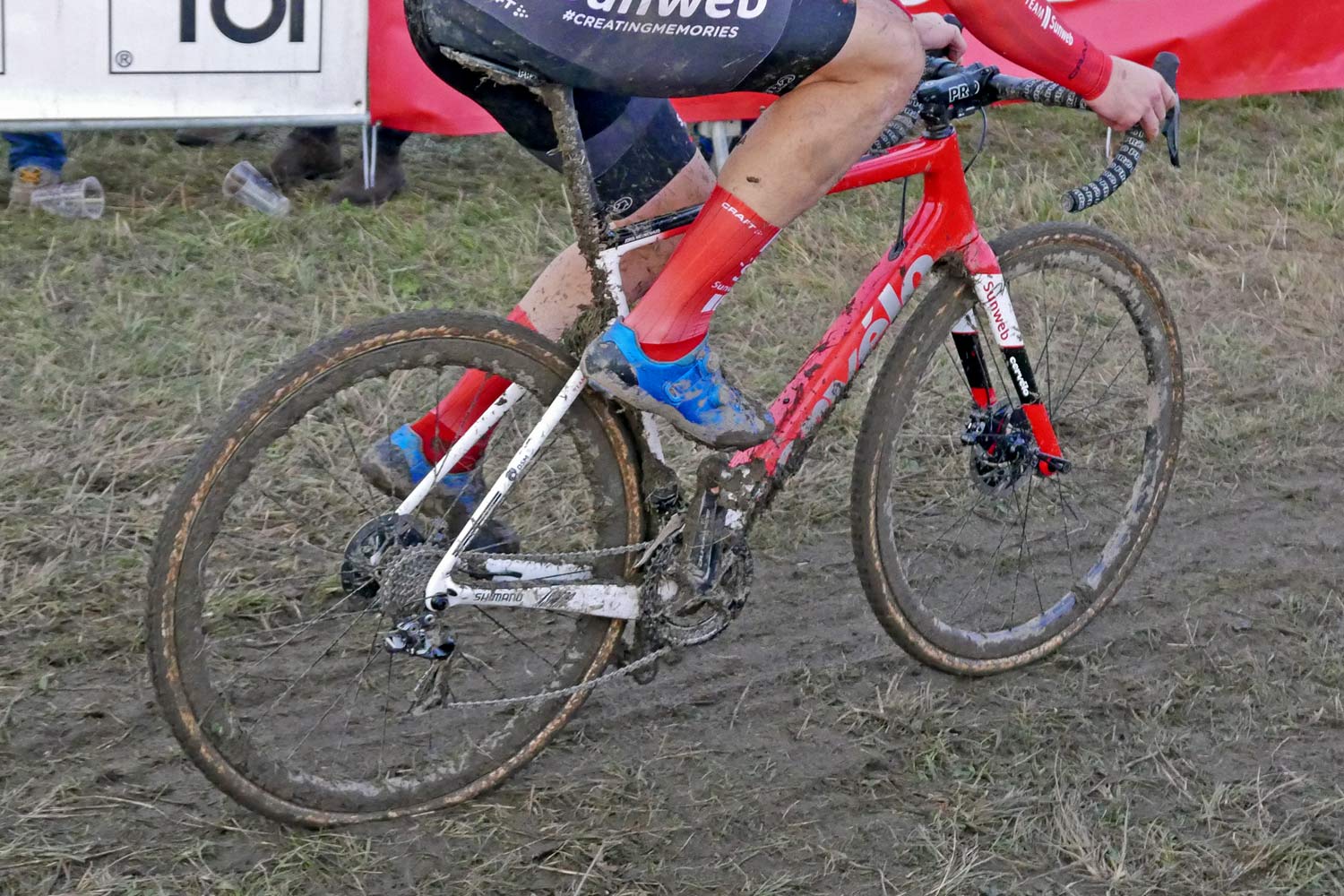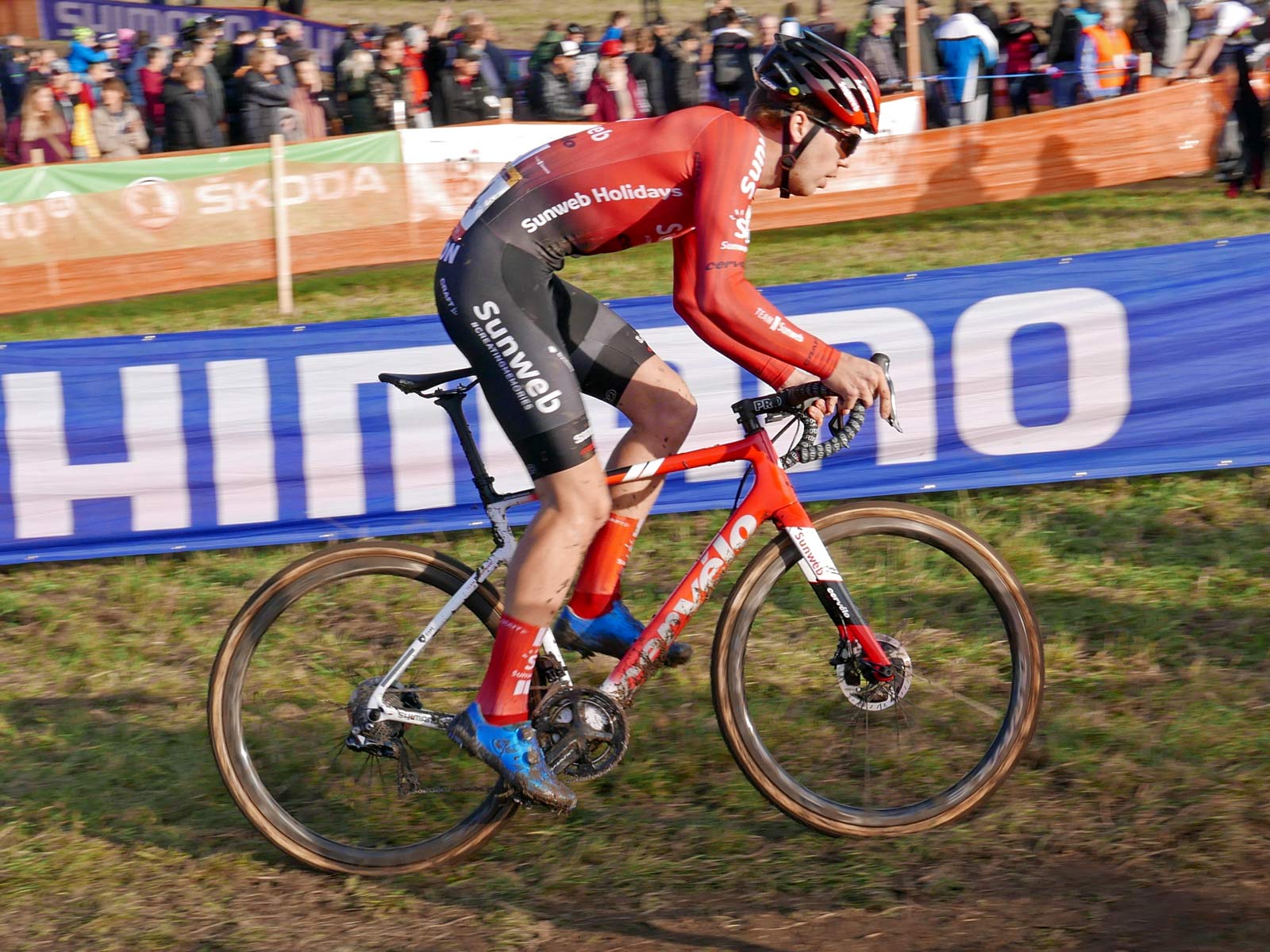If you want more clarity of the difference between a top-level cyclocross race bike and a race-ready gravel bike, you won’t find it from Cervélo. Over the weekend of UCI World Cup racing, we spotted Team Sunweb rider Joris Nieuwenhuis racing the carbon Cervelo Aspero gravel bike head-to-head with the world’s best cyclocross racers. So how does a gravel bike fare at the CX World Cup?
Cervélo Áspero gravel bike’s double life as a cyclocross bike
So what was it that separates a gravel bike from a cyclocross bike again? Generally we look at gravel bikes fitting larger diameter tires, having more relaxed & stable geometry, and more comfort & adventure focused versatility.
But it all is in a manner of degrees. As we’ve seen gravel bikes start to differentiate themselves into fast gravel racing, all-around gravel, adventure gravel, and even bikepacking sub-genres, some modern gravel bikes aren’t so far away from some cross bikes.
So what does it take to race a gravel bike at the Cyclocross World Cup?
In fact, those gravel changes vs. cyclocross were already the advantages that cyclocross bikes had over traditional road bikes. Cervelo is clearly planted in the more racy “aero is everything” side of bikes they build, and they explicitly said the new Aspero is meant to “haul ass, not cargo“.
Cyclocross conversion – tech details
So to turn a gravel bike into a cross race bike for their one cross-racing pro, Team Sunweb built up an Aspero with a cross-proven Shimano Dura-Ace Di2 R9170 double groupset with pro-only 46/39 gearing, 140mm rear/160mm front rotors, Dura-Ace carbon tubular wheels and hard-to-beat Dugast 33mm tubulars, the latest XTR pedals, and PRO Vibe cockpit.
Curiously, there’s what appears to be a two-bolt FSA zero offset carbon seatpost, instead of the PRO variant that has a rotating head that is probably not very well suited for cyclocross remounts.
Another odd thing about the Aspero (and one I heard a different team’s mechanic grumble about in the Depo), is that the front thru-axle threads on from the driveside, while the rear threads on from the non-driveside. In a sport where fast work in the pits can be crucial to success, the disparity was apparently a sore point.
From a slightly different perspective, there has been discussion that removing levers from the left side of the bike is beneficial, since most cross racers dismount to the left. But along that line, the rear should probably be flipped too?
Cervelo Aspero’s adjustable geometry?
A closer look at that front axle also reminds us that the Aspero has a flip chip at the dropout designed to affect the bike’s handling depending on wheel & tire size used. Note that Nieuwenhuis has his axle in the forward position.
Cervelo actually specs the Aspero with the Trail Mixer dropout in the rearward position for smaller diameter tire setups (650b x 47mm or 700c x 32mm) for a bit more Trail to balance the inherent quick steering with a more stable ride.
The forward position was designed for larger diameter tires (~700c x 40mm) to get less Trail overcoming the slower handling of the bigger tire and return some of that quicker steering. So, it’s really no surprise that Nieuwenhuis runs his smaller UCI-legal cross tires with the Trail Mixer in the less Trail setting to get both the more maneuverability of the lighter, smaller diameter tire & even faster steering to get around the tight cyclocross corners.
Team Sunweb’s custom cyclocross solutions
One complication of the gravel geometry though, is its 76mm of bottom bracket drop. More than 1cm lower than Mathieu van der Poel’s race winning Inflite, which would make riding the deep mud ruts and steep off-cambers that you actually find on almost every World Cup cyclocross course even more difficult to navigate without pedal strikes. (That’s also 1cm higher that Nieuwenhuis would have to bunny-hop if he was planning to ride the barriers instead of running them.)
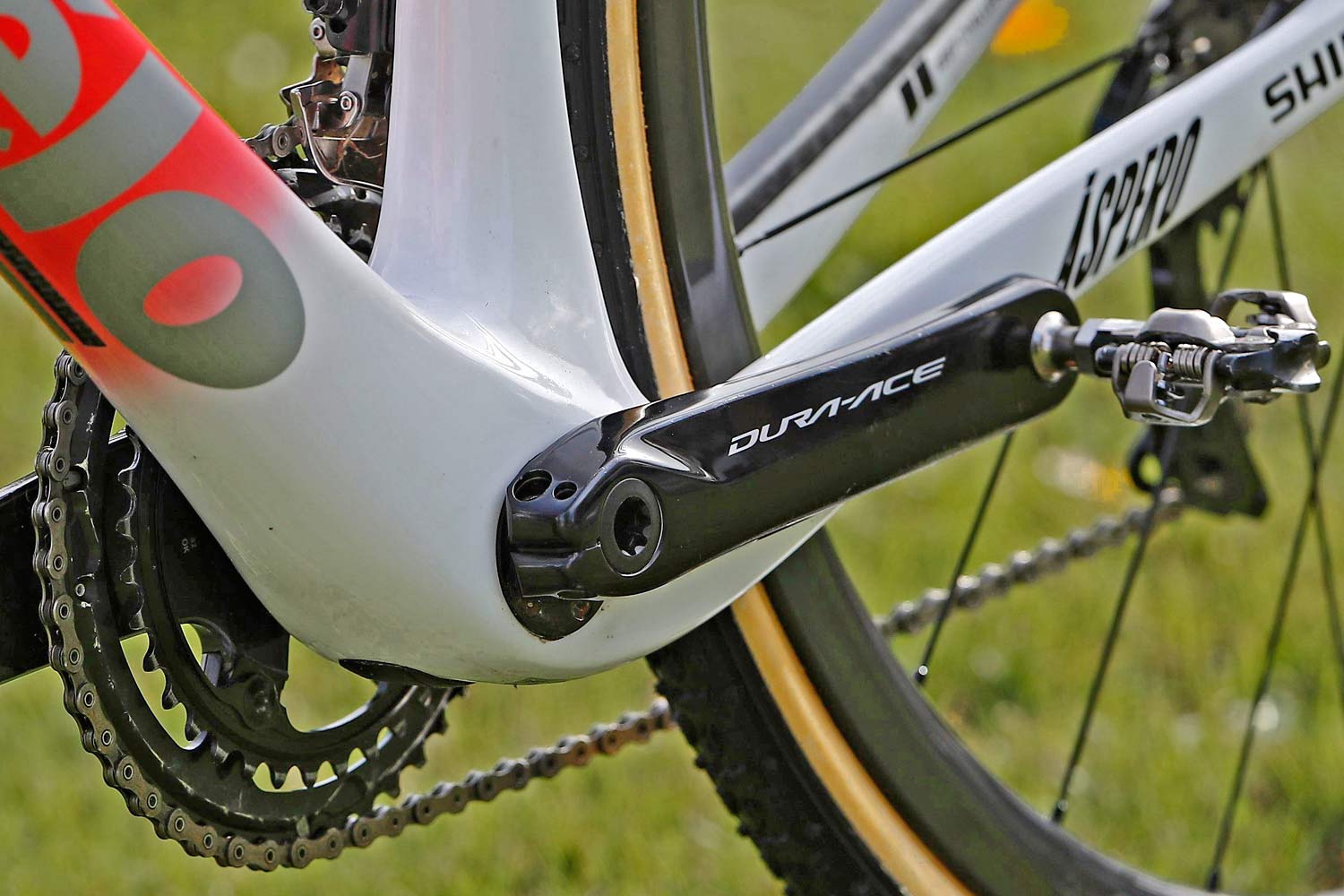
But… Team Sunweb has a solution. Since the Aspero has a large 46mm shell diameter BBright bottom bracket shell that fits a 30mm axle with a standard bearing, the team was able to fit an eccentric bottom bracket for Nieuwenhuis that fits the 24mm Dura-Ace axle (like the Wheels Manufacturing eccentric for BB30/PF30). That means they could effectively reduce the frame’s BB drop by 6mm or more, getting it back closer to a typical cross standard dimension.
The team also says some additional Dyneema fibers were added to the down tube, in what appears to just be two thin strips to protect the upper part of the tube against impacting barriers or other hard objects in case of some major crash.
So how did the Aspero fare under the Dutch road WorldTour rider and past U23 CX World champ. You see Joris Nieuwenhuis racing with number four, which means he was the fourth highest ranked UCI rider on The Netherlands’ team, and he’s ranked 14th overall in UCI CX and now 12th in the World Cup.
Nieuwenhuis finished 11th in Tabor, a solid cyclocross position for someone racing a gravel bike against the best riders in the world (and faster than every crosser not from The Netherlands or Belgium to boot!)
